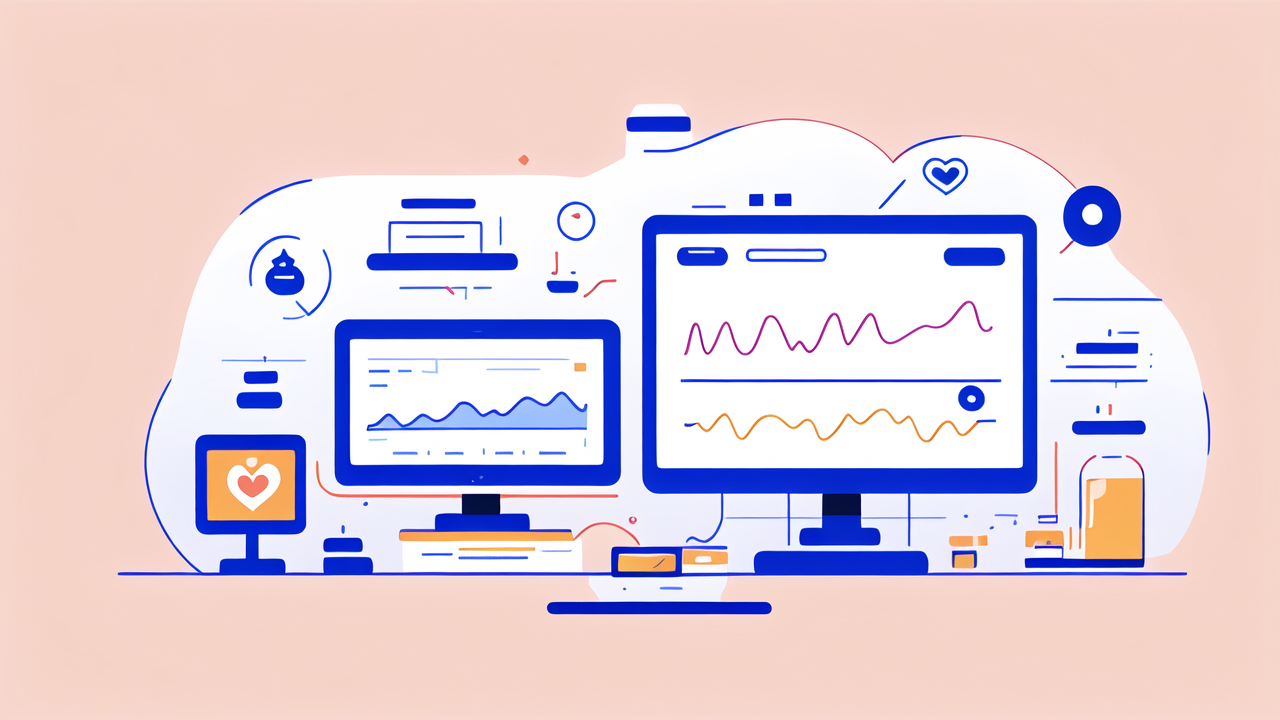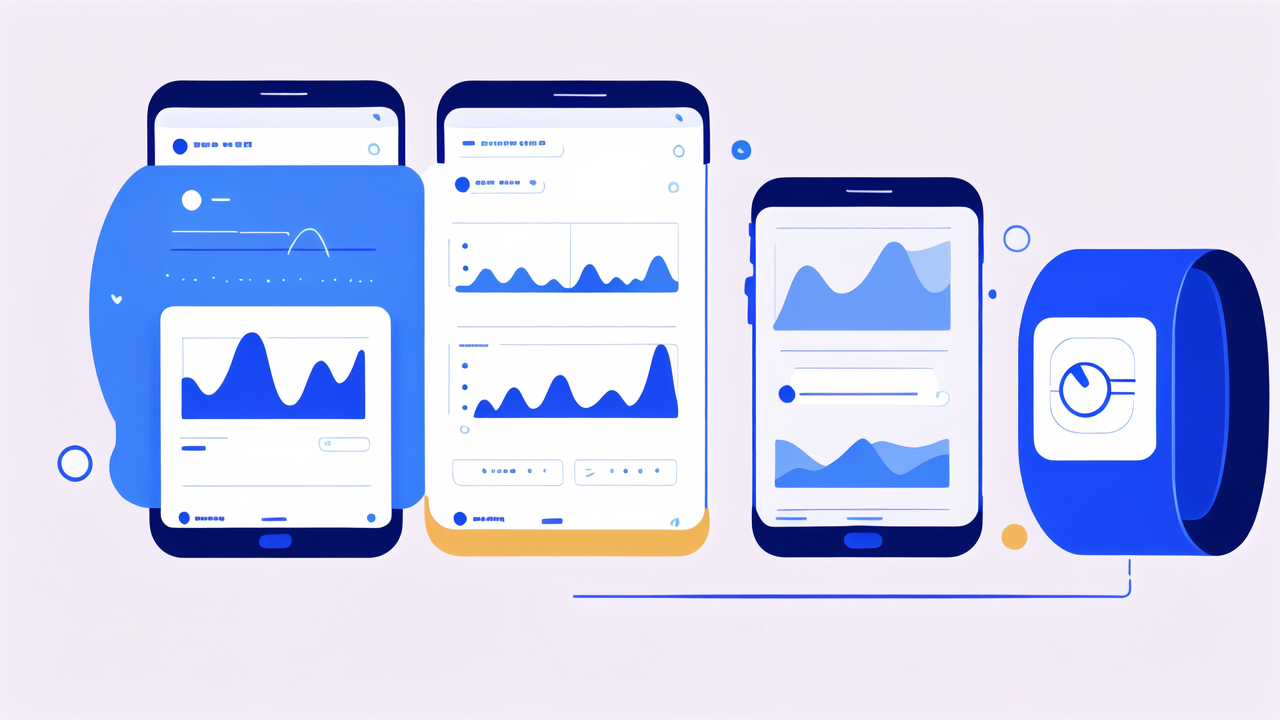The Evolution of Health Monitoring Technology
The Origins of Health Monitoring Devices
Health monitoring has come a long way. It started with simple tools like thermometers and stethoscopes. These devices helped doctors check basic health signs. Over time, more advanced tools were created. They could measure things like blood pressure and heart rate.

Early health monitors were big and only found in hospitals. They needed trained staff to use them. This meant people couldn't easily track their health at home. As technology improved, devices got smaller and easier to use. This paved the way for personal health monitoring.
The first wearable health devices were basic. They could count steps or estimate calories burned. These were the first steps towards the smart watches we have today. They showed that people wanted to track their health outside of doctor visits.
Advancements in Smart Watch Technology
Smart watches have changed a lot in recent years. They've become powerful health tools. Modern smart watches can do much more than tell time or count steps. They can track heart rate, detect falls, and even take ECG readings.
The sensors in smart watches have improved greatly. They can now collect more accurate data. This includes detailed sleep patterns and stress levels. Some watches can even measure blood oxygen levels. This was once only possible with medical equipment.
Smart watches now connect to our phones and the internet. This allows for real-time health tracking. Users can see their data anytime and share it with doctors. This constant monitoring can help catch health issues early.
The Integration of AI and Machine Learning
AI and machine learning have made smart watches even smarter. These technologies help make sense of all the data collected. They can spot patterns that humans might miss. This turns raw data into useful health insights.
AI can learn what's normal for each user. It can then alert them to unusual changes. For example, it might notice an irregular heartbeat. Machine learning also helps improve the accuracy of health predictions. It can use data from many users to refine its algorithms.
These technologies also enable personalized health advice. A smart watch might suggest when to exercise or remind you to stand up. As AI gets better, smart watches will become even more helpful health tools.
Key Health Metrics Tracked by Smart Watches
Heart Rate and Arrhythmia Detection
Heart rate tracking is a key feature of smart watches. They use light sensors to measure pulse. This allows for continuous heart rate monitoring. Users can see how their heart rate changes throughout the day.

Smart watches can also detect arrhythmias. These are irregular heartbeats that can be signs of health problems. Some watches can take ECG readings. This can help identify conditions like atrial fibrillation.
Constant heart monitoring can reveal important health trends. It can show how exercise affects heart rate. It can also detect stress or sleep issues based on heart patterns. This data helps users and doctors make informed health decisions.
Blood Pressure and Hydration Monitoring
Some advanced smart watches can now estimate blood pressure. They use pulse wave analysis to do this. While not as accurate as traditional cuffs, it's a useful tool for tracking trends. Regular blood pressure checks can help prevent heart disease and stroke.
Hydration monitoring is another emerging feature. Smart watches can estimate fluid loss during exercise. Some use electrical sensors to measure the water content in body tissues. This helps users stay properly hydrated, especially during workouts.
These features are especially helpful for people with certain health conditions. Those with hypertension can track their blood pressure easily. Athletes can monitor their hydration levels to improve performance and recovery.
Respiratory Rate and Sleep Quality
Smart watches can track respiratory rate, or how fast someone breathes. This is done by detecting small chest movements. Abnormal breathing rates can signal various health issues. This feature is particularly useful for people with lung conditions.
Sleep tracking has become a popular smart watch feature. Watches use movement and heart rate data to analyze sleep patterns. They can show how long users spend in different sleep stages. This includes light, deep, and REM sleep.
Good sleep is crucial for health. Smart watch data can help users improve their sleep habits. It might show that they need more deep sleep or that they wake up too often. This information can lead to better sleep quality and overall health.
The Impact of Smart Watches on Public Health in the United States
Enhancing Personal Health Management
Smart watches are changing how people manage their health. They provide constant health data, making users more aware of their bodies. This can lead to better lifestyle choices. People might exercise more or eat healthier based on their watch data.

These devices also help with preventive care. They can alert users to potential health issues early. For example, a watch might detect an irregular heartbeat before it becomes serious. This early warning can prompt users to seek medical help sooner.
Smart watches also encourage regular exercise. Many have features that remind users to move or stand up. They often gamify fitness with goals and rewards. This can motivate people to be more active, improving overall health.
Empowering Patients with Chronic Conditions
For people with chronic conditions, smart watches are powerful tools. They allow for continuous monitoring of vital signs. This is especially helpful for conditions like diabetes or heart disease. Patients can track their health between doctor visits.
Smart watches can send alerts for dangerous health changes. A diabetic user might get a warning about low blood sugar. Someone with heart issues could be alerted to an irregular heartbeat. This real-time monitoring can prevent emergencies.
These devices also help patients follow treatment plans. They can remind users to take medication or check their blood sugar. Some watches can even track medication adherence. This helps doctors see if patients are following their prescriptions.
The Role in Epidemiological Research and Health Policy
Smart watches are becoming valuable tools for health research. They provide large amounts of real-world health data. This data can help researchers study disease patterns and health trends. It's especially useful for studying how lifestyle affects health.
During the COVID-19 pandemic, smart watches played a new role. They helped detect early signs of infection. Some studies used smart watch data to track the spread of the virus. This showed how wearable technology could help in public health crises.
Health policymakers are taking note of smart watch data. It provides insights into population health trends. This could help shape future health policies. For example, data showing widespread sleep issues might lead to new public health initiatives.
Smart watches are changing personal health management and public health research. As they become more advanced, their impact on health care will likely grow. They represent a shift towards more proactive and personalized health care.




Leave a comment
This site is protected by hCaptcha and the hCaptcha Privacy Policy and Terms of Service apply.